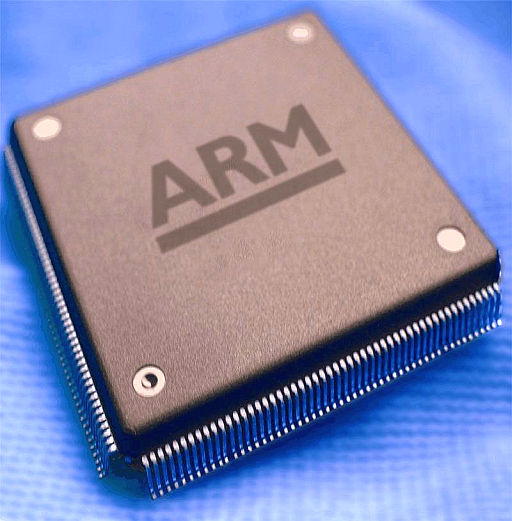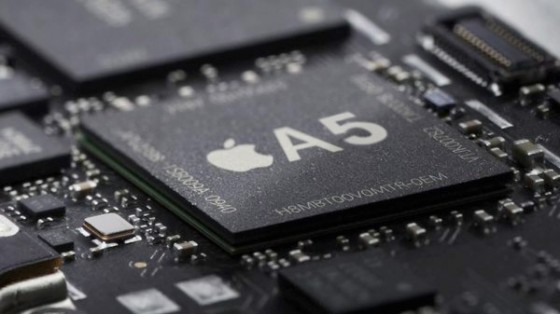Rumors have been popping up about a possible transition to ARM CPUs in Apple’s MacBook line – here’s why it doesn’t add up.
The Rumors & Background
The rumors themselves are nothing more than that – just rumors. As of now there is nothing concrete to backup the statement that Apple intends to transition to a whole new chip architecture.
I’m not surprised that rumblings of an Intel to ARM transition would spring up especially after continued success of the iPhone and iPad. All iOS products are powered by an ARM CPU and have been since the first generation iPhone. It wasn’t until the introduction of the iPad that Apple started getting more involved with CPU design instead of delegating the design to third party vendors.
However, Apple themselves doesn’t manufacture the ARM CPU —or Apple A4 and A5 — but designs the chip and allows Samsung to mass produce the chip for the iPad, iPhone, iPod Touch and Apple TV.
Despite the marketing press surrounding the A4 and A5 CPUs, their design isn’t 100% Apple. 3 years ago Apple bought PA Semi, a prominent ARM CPU which lead to development of the A4 CPU first used in the iPad. Even though Apple’s multi-billion purchase of PA Semi was heralded as a new wave of faster ARM CPUs, the A4 was nothing more than a Cortex-A8 CPU that was stripped of unneeded components and combined with a PowerVR SGX 535. The A4’s successor dubbed the A5 combines a dual-core ARM Cortex-A9 CPU and a PowerVR SGX 543MP2 GPU. Both the A4 and A5 are great chips but use more off the shelf components than Apple and PA Semi developed components.
We won’t start to see a true Apple and PA Semi developed CPU for sometime but even as I type this, both are most likely working diligently on a successor to the A5 CPU. Whether it’s a quad-core chip or just a stopgap for something much faster remains to be seen but the mobile CPU competition is fierce and Apple needs to do everything it can do to keep up.
Does An ARM Transition Actually Make Sense?
How does this relate to Intel and why would Apple ever jump ship to ARM? Playing devil’s advocate and assuming Apple is ready to embrace ARM for 100% of its products, here are the potential reasons.
Apple’s purchase of PA Semi paved the road for Apple to fully dictate future designs of CPUs for iOS devices which is crucial for competing with the likes of HTC, Motorola and Sony in the mobile space. Apple doesn’t need to rely on third party chip designers to dictate the speed of the next generation iPhone or iPad. This same mentality could be applied to the Mac should a transition to ARM happen. Currently Apple uses Intel CPUs to power its lineup of Macs. Using an ARM CPU in the next generation Mac would afford Apple 100% control on speed and power consumption.
Other rumors point to ARM’s move to 64-bit processing in 2013 — something Intel and AMD have been diligent on integrating in their processors over the last half-decade — as the prime reason for Apple reconsidering the Core line of CPUs for an ARM branded chip. This new 64-bit ARM CPU dubbed the A15 would be a quad-core processor theoretically running at 2.5GHz per core. The problem is this future chip will be on par with today’s Sandybridge Intel processors powering the current batch of MacBook Pros. The next biggest drive of ARM powered Macs is the fact that OS X and iOS aren’t so different while the later already runs on ARM. In a perfect world the transition would be smooth for Apple as the codebase would be the same but you’d run in to a few majors problems: third party Apps and porting major portions of OS 10.7 to ARM wouldn’t be simple. Just because iOS runs on ARM doesn’t mean OS X can be ported so easily. During the first generation iPhone’s debut in January 2007, Jobs touted the mobile OS’ reliability by proclaiming it was a stripped down version of OS X. Major portion of the OS would need to be rewritten for ARM and would be a step backward for Apple from a hardware perspective.
Intel CPUs already provide the power consumption and speed Apple has been looking for. During the PowerPC/Intel transition, Apple implemented new tech that took advantage of specific Intel CPU features through OpenCL and Grand Central Dispatch which delegate processing task to the GPU and CPU more efficiently. Despite that, the move for developers would be forcing open an already closed wound and pouring copious amounts of salt in. Even though the transition from the PowerPC to Intel transition was made as seamless as possible by Apple, it’s something no developer wants to go through anytime soon.
Entire programs would have to be rewritten from the ground up specifically for an ARM powered Mac while iOS Apps would have an odd home. Despite being code compatible, the interface of an iOS App would not mesh well with OS X.












